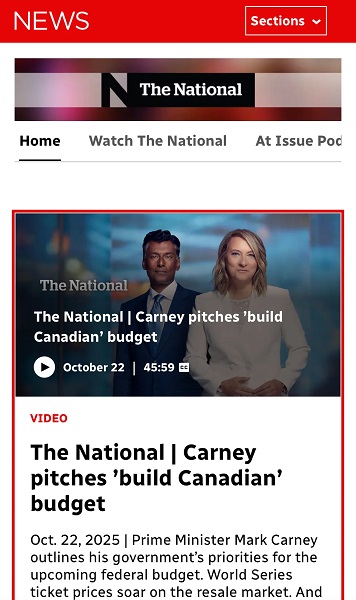International
Talk of ‘pre-emptive pardons’ sets the stage for Trump to drain the Washington swamp
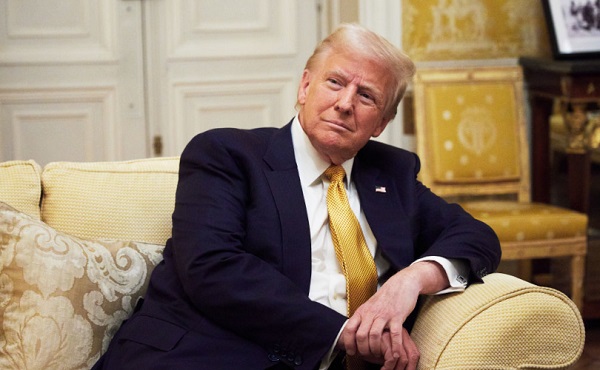
President-Elect Donald Trump reacts during his meeting with Prince William, Prince of Wales at the Embassy of the United Kingdom’s Residence on December 7, 2024, in Paris, France
From LifeSiteNews
Once you understand how Donald Trump is assembling his White House and once you accept the mission of the DC system to defend itself by isolating a weak spot in the mechanism, then the assembly of cabinet based on loyalty makes sense.
Any time the professional leftists lose anything, they immediately become victims. Whether defeated in the battle of ideas (retreat to safe spaces), defeated in the field of pop culture, or even defeated linguistically through debate (words are violence). Whenever the professional left loses, they immediately become victims. It’s what they do.
The professional political left, newest version from the Chicago spawn of Dohrn/Ayers, has been waging full combat lawfare via a weaponized government for the past 16 years. However, Obama/Plouffe were defeated, “their kind” rose again and won the 2024 U.S. presidential election.
What we see in this “pre-emptive pardon” narrative, is a repeat of the victim narrative. This time the White House discussion boils down to “lawfare agents must be protected from any retaliation for their action.” Pardons presumably provide the mechanism to protect the victims. In the big picture of ideology, this is a continuation of the same mindset.
Politico started the narrative with an outline saying the White House was having an internal debate as to whether Joe Biden should pre-emptively issue pardons to members of the January 6 committee, members who constructed false impeachment accusations, members within the DOJ who fabricated political cases using the special counsel process, or generally people on the political left who supported/facilitated all the aforementioned false attack fronts.
As the narrative is told, all those who supported the attacks against President-Elect Donald Trump and his allies now need to be protected from “retribution.” Inherent in the argument, and within the use of pardons, is the baseline that some form of illegal activity was taking place. Heck, if it wasn’t unlawful conduct, then no pardon would be needed. This is the political catch-22 created by the pre-emptive pardon narrative.
Various congressional people, DOJ insiders, White House liaisons, State Department officials and underling staff are all possible recipients if Joe Biden decides to take this unprecedented approach. However, if you look at the expressed approach indicated by Trump and the assembly of cabinet members who would be in place to carry out such “retribution,” you will not find any indication of intent. Quite the opposite is true.
Trump does not appear to be in alignment with any approach that would lead to legal indictments, arrests, charges or other legal accountability measures. Beyond the public release of hidden, perhaps classified information that might put sunlight on the previous activity by those who weaponized their offices, there is nothing. Sunlight on prior events, while moving forward to restore functioning law and order, appears to be the most likely approach. From Politico:
… White House officials, however, are carefully weighing the extraordinary step of handing out blanket pardons to those who’ve committed no crimes, both because it could suggest impropriety, only fueling Trump’s criticisms, and because those offered preemptive pardons may reject them.
The deliberations touch on pardoning those currently in office, elected and appointed, as well as former officials who’ve angered Trump and his loyalists.
Those who could face exposure include such members of Congress’ Jan. 6 Committee as Sen.-elect Adam Schiff (D-Calif.) and former GOP Rep. Liz Cheney of Wyoming. Trump has previously said Cheney “should go to Jail along with the rest of the Unselect Committee!” Also mentioned by Biden’s aides for a pardon is Anthony Fauci, the former head of the National Institute of Allergy and Infectious Diseases who became a lightning rod for criticism from the right during the COVID-19 pandemic.
The West Wing deliberations have been organized by White House counsel Ed Siskel but include a range of other aides, including chief of staff Jeff Zients. The president himself, who was intensely focused on his son’s pardon, has not been brought into the broad.
In addition to their professional victim approach, the one constant with the Marxist left is their use of projection. They weaponized government, so they anticipate the target of their weaponization efforts, Donald Trump, will return fire in kind. Again, I highly doubt it.
All outward indications are that Trump wants to create a legacy presidency for the Gen-Z generation (Barron), similar to what was created by Ronald Reagan for the Gen-X generation. Selecting Susie Wiles as chief of staff is the strongest indication of this intent.
The appointments to White House legal counsel positions and main justice legal offices by Trump all appear to have one common denominator: to protect the president. I strongly doubt there will be any effort beyond that.
Big picture
Once you understand what Trump is assembling (the phalanx) and once you accept the mission of the D.C. system to defend itself by isolating a weak spot in the mechanism, then everything from the assembly of the cabinet to the process being discussed makes sense.
Within a phalanx, if one shield drops the entire construct is compromised. The strongest shields need to surround the core with ferocity.
The recent Supreme Court decision affirmed the president of the United States as the unitary, plenary power that controls every mechanism of the executive branch of government, and as long as the president is acting within his “official duty” he holds absolute power and absolute immunity.
Think of each cabinet member as a shield in this political phalanx that surrounds the weapon, Trump.
Yes, the phalanx is by construct an offensive fortification used to advance upon the enemy. However, the strength of the phalanx is its ability to be impervious to attack from 360°.
The phalanx advances, inch by inch, against a larger fortification. In the transition team assembly, this is what Trump is putting together.
Hegseth is a key component of the phalanx, the fortification process that puts Trump at the center of the cabinet. Each component of the cabinet protecting the center.
The phalanx is the mechanism to carry the weapon that is President Donald Trump. The D.C. UniParty is looking for a weakness in the phalanx, like a wolf circling a porcupine.
Trump has turned his focus to the “war fighters,” the men and women who carry out the mission objective of the Defense Department. The nomination of Pete Hegseth represents the confrontation of a power struggle that has been decades in making.
The self-serving senators are trying to block Hegseth, while maintaining a position of pretending support for Trump. The DeceptiCon republicans in the Senate are in full circling mode, looking for a weakness to exploit.
The schemes of the conniving Republican senators are transparently visible in the efforts of Senator Joni Ernst, who is circling the phalanx Trump is creating – while simultaneously inserting herself into the DOGE (Department of Government Efficiency) mission.
Ernst is doing Mitch McConnell’s work, under instruction from John Thune and Mitch. See Ernst with clear eyes.
One does not become unattached to corrupt intent.
Clear eyes!
I did not think President-elect Trump had the accurate laser vision for the task.
I was getting concerned.
Then I saw the very specific wording of this:
The McGinley move makes a lot of sense. DOGE and the Office of Management and Budgets (OMB) are going to be joined at the hip. They are going to have to navigate the Impoundment Control Act, challenging the system that places limits on a president’s ability to unilaterally withhold funding.
Inside that legal battle, deciding what DOGE can do without legislative approval, the OMB is going to be the execution part. McGinley will be the legal liaison focused on what technical approaches DOGE/OMB can execute. In essence, can they stop funding XX, thereby eliminating it?
That said, that’s not the important part.
The language Trump is using to describe the role of David A. Warrington, the switched White House counsel, is something entirely new.
Donald Trump says: “to serve as Assistant to the President and Counsel to the President. Dave will lead the Office of White House Counsel and serve as the top attorney in the White House.”
Normally the White House counsel does not represent the interests of the president, the WHC represents the interests of the office.
It would appear to me, at least as I review the details, that Trump is now fully aware how his presidential interests can sometimes conflict with the interests of the White House counsel, and he is making a move to ensure that conflict doesn’t happen.
An example of the conflict I have explained repeatedly in the “declassification of information.”
Not kidding, it is almost as if someone very close to Trump read something I previously outlined, because it came with a serious warning borne out of years of frustration:
In Term-1 the IC message to the WH Counsel was that if Donald Trump declassified any documents, they would use the DOJ (special counsel weapon) to attack the office of the president for “obstructing justice.” The WHC was fraught with fear over what would happen and demanded that POTUS Trump stop trying to declassify information/documents the IC didn’t support.
The way Trump is now portraying the role of the White House counsel is to represent his interests first and foremost, then represent the interests of the office. In a few subtle, and not so subtle ways, this makes sense.
We can tell by the nominations to attorney general, deputy attorney general, and assistant attorney general-national security division, that main justice is already positioned to defend and protect Donald Trump. The people in charge of the silo are all loyalty-first people, aligned in the interests of Trump.
It would appear that Trump is now bringing that same outlook into the White House. The White House counsel aligning in common purpose, with the specific purpose of executing the intentions of President Donald Trump.
I’m glad to see this approach, because as I have repeatedly affirmed, only President Trump (the person) can confront the silo system in Washington, D.C.
That’s why the phalanx makes sense.
Reprinted with permission from Conservative Treehouse.
Daily Caller
US Eating Canada’s Lunch While Liberals Stall – Trump Admin Announces Record-Shattering Energy Report
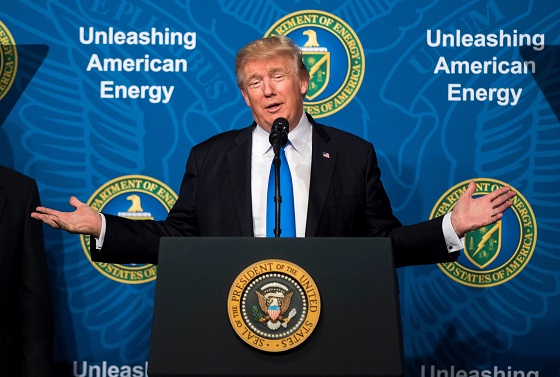

From the Daily Caller News Foundation
By Audrey Streb
The Department of Energy (DOE) touted a report on Wednesday which states that America broke records in liquefied natural gas (LNG) exports.
The U.S. became the first country to export over 10 million metric tonnes of LNG in one month in October, Reuters reported on Monday, citing preliminary data from the financial firm LSEG. The DOE posted on X on Wednesday that “there are big opportunities ahead for U.S. natural gas” and has consistently championed LNG in a sharp departure from former President Joe Biden’s crackdown on the resource.
“The fact that America’s oil and gas industry was able to pass this stunning milestone is impressive considering all the roadblocks to progress which were thrown up by the Biden administration,” David Blackmon, an energy and policy writer who spent 40 years in the oil and gas business, told the Daily Caller News Foundation. “It is a testament to both the resilience and innovative mindset of the industry and to the phenomenal wealth of America’s natural gas resource.”
Dear Readers:
As a nonprofit, we are dependent on the generosity of our readers.
Please consider making a small donation of any amount here.
Thank you!
🗣️RECORD BREAKING: For the first time, U.S. LNG exports are projected to surpass 10 million metric tons in a single month. There are big opportunities ahead for U.S. natural gas!
— U.S. Department of Energy (@ENERGY) November 5, 2025
Two facilities in Louisiana and Texas are responsible for the LNG export surge, according to Reuters. The U.S. LNG industry emerged as an energy sector giant in recent decades, with America now leading the world in LNG exports after being projected to be a net importer as late as 2010, according to S&P Global.
The Biden administration enacted a freeze on new LNG export permits and “intentionally buried a lot of data and released a skewed study to discredit the benefits of American LNG,” the DCNF previously reported. The environmental lobby applauded Biden’s January 2024 freeze on new LNG export terminals, though critics argued that the policy stalled investment, would not reduce emissions and undermined America’s global strategic interests.
In contrast, President Donald Trump sought opportunities to bolster LNG and reversed the new permit pause through a day-one executive order. Some energy policy experts told the DCNF that the reported milestone highlights the resiliency of the industry and the benefit of Trump’s “American energy dominance” agenda.
International
The capital of capitalism elects a socialist mayor
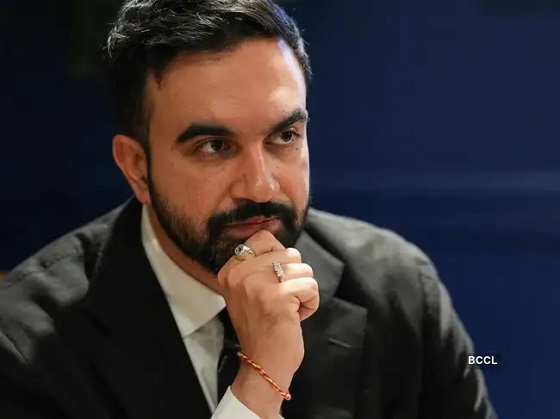
New York City — the beating heart of American capitalism — has handed the keys to a socialist. Zohran Mamdani, a 34-year-old Democratic Socialist assemblyman from Queens, captured City Hall on Tuesday night, defeating former Governor Andrew Cuomo and Republican Curtis Sliwa in a bitterly fought three-way contest that upended the city’s political order. The Associated Press called the race less than an hour after polls closed, projecting Mamdani at 50.4% to Cuomo’s 41.3%, with Sliwa finishing a distant third at 7.5%. Mamdani, born in Uganda and raised on Manhattan’s Upper West Side, will become the city’s first Muslim and first openly socialist mayor.
Mamdani’s win marks a generational and ideological break from the city’s past, one that rattled Wall Street, alarmed business leaders, and divided Democrats. A proud member of the Democratic Socialists of America, Mamdani ran as a firebrand reformer promising to “tax the rich” and dismantle the influence of corporate money in city politics — proposals that critics said would cripple New York’s fragile economy. His campaign drew widespread scrutiny for his prior calls to “defund the police” and his harsh criticism of Israel, which led to accusations of antisemitism.
Cuomo’s attempt at a political resurrection fell flat. Despite spending more than $12 million on his independent campaign and receiving support from super PACs pouring in roughly $55 million, the former governor could not overcome the wave of progressive enthusiasm that propelled Mamdani from longshot to frontrunner. In a last-ditch effort to stave off defeat, Cuomo earned late backing from President Trump, outgoing Mayor Eric Adams and a handful of moderate Republicans, including Rep. Mike Lawler, who labeled him “the lesser of two evils.” Even that wasn’t enough.
The election itself was the city’s first serious three-way showdown in decades. Mamdani, Cuomo, and Sliwa clashed repeatedly over crime, affordability, and the future of policing. Cuomo leaned on his executive record and cast himself as a pragmatic problem solver, while Mamdani framed the race as a moral reckoning for a city that, in his words, “forgot who it’s supposed to serve.” His online following, slick digital outreach, and constant street presence helped galvanize younger voters, particularly in Brooklyn and Queens, where turnout surged. Meanwhile, Sliwa — the perennial GOP candidate — failed to broaden his appeal beyond his Guardian Angels base.
As he prepares to take office on January 1, 2026, Mamdani faces steep headwinds. His tax-and-spend agenda will require approval from state lawmakers and Governor Kathy Hochul, who has already rejected the idea of raising taxes. Still, Assembly Speaker Carl Heastie and Senate Majority Leader Andrea Stewart-Cousins have signaled they’ll work with him to advance portions of his sweeping platform. The victory, however, sends a message beyond policy: the city that built capitalism has now chosen a mayor who wants to dismantle it. Whether Zohran Mamdani’s socialist experiment reinvents or wrecks New York will soon be tested in the only arena that matters — reality.
-

 Brownstone Institute2 days ago
Brownstone Institute2 days agoBizarre Decisions about Nicotine Pouches Lead to the Wrong Products on Shelves
-

 Bruce Dowbiggin2 days ago
Bruce Dowbiggin2 days agoA Story So Good Not Even The Elbows Up Crew Could Ruin It
-

 Agriculture1 day ago
Agriculture1 day agoDanish Cows Collapsing Under Mandatory Methane-Reducing Additive
-

 Alberta1 day ago
Alberta1 day agoAlberta government’s plan will improve access to MRIs and CT scans
-

 Health2 days ago
Health2 days agoRFK Jr’s argument for studying efficacy of various vaccines
-
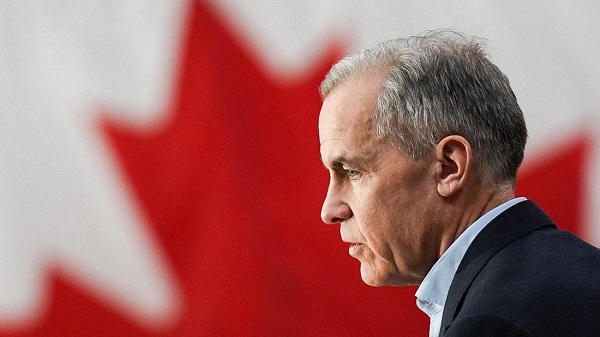
 Business2 days ago
Business2 days agoCarney government’s first budget should signal end to crippling ‘climate’ policies
-

 Business2 days ago
Business2 days agoTrump’s Tariffs Have Not Caused Economy To Collapse
-
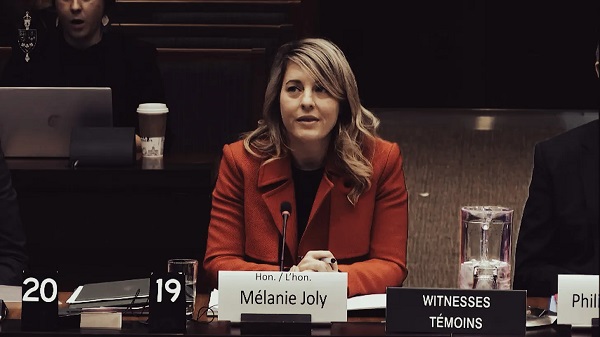
 Business1 day ago
Business1 day agoNo Jobs Clause: Liberals Under Fire Over Stellantis Deal in Fiery Committee Showdown







